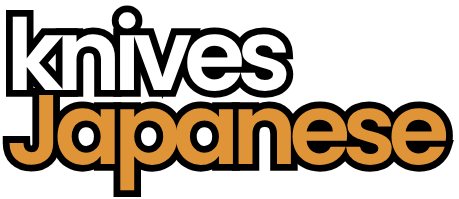The culinary world’s reverence for high-performance cutting tools consistently points towards the unparalleled excellence of japanese chef’s knives. These aren’t merely instruments; they are a profound embodiment of centuries of metallurgical artistry, precision engineering, and an unwavering dedication to the chef’s craft. From the meticulous forging processes to their remarkably sharp edges, every aspect of a Japanese knife reflects a philosophy deeply rooted in tradition and continuous refinement.
Understanding the intricate world of japanese chef’s knives requires delving into their historical significance, the unique materials employed, and the nuanced techniques that give them their legendary status. This comprehensive guide aims to illuminate the authentic mastery behind these blades, offering a professional’s perspective on their selection, use, and meticulous care. Whether you are a seasoned culinarian or an aspiring home chef, appreciating these tools enhances not just your cutting technique but your entire culinary journey. Explore more about the rich history and craftsmanship of these tools on Japanese Knives World’s history section.
Unveiling the Legacy of Japanese Chef’s Knives
The journey of japanese chef’s knives is a narrative steeped in cultural heritage, evolving from the swordsmithing traditions of feudal Japan. This lineage has endowed modern kitchen knives with a spirit of precision and artistry that sets them apart globally. Each knife tells a story of its origins, from the choice of steel to the shaping of the handle, reflecting a deep respect for both the material and the user.
The philosophy behind these knives emphasizes harmony between the blade, the hand, and the food. This holistic approach ensures that every cut is not just efficient but also an extension of the chef’s intent. The legacy continues to inspire innovation, ensuring that japanese chef’s knives remain at the forefront of culinary technology while honoring their timeless roots.
Defining Excellence: What Sets Japanese Chef’s Knives Apart
Excellence in japanese chef’s knives is defined by a confluence of factors that are often individually present in other knives but rarely combined with such synergistic effect. First and foremost is the exceptional hardness of their steel, which allows for a remarkably acute edge angle. This results in an unparalleled sharpness that glides through ingredients with minimal effort, preserving the delicate cellular structure of food.
Secondly, the meticulous craftsmanship, often involving multiple layers of steel and differential heat treatments, contributes to both durability and aesthetic beauty. Unlike mass-produced alternatives, many japanese chef’s knives are still handcrafted by master artisans, infusing each piece with unique character and superior quality. Furthermore, the specialized blade geometries cater to specific culinary tasks, reflecting a profound understanding of food preparation. This detailed focus on design and function truly distinguishes them.
A Glimpse into the Artisan’s Philosophy
At the heart of every great japanese chef’s knife lies the philosophy of its maker—the artisan. This philosophy often centers on patience, precision, and an unyielding pursuit of perfection. Bladesmiths dedicate decades to honing their skills, mastering ancient techniques passed down through generations while also embracing modern metallurgical advancements. Their work is not just a job; it is a way of life, a spiritual commitment to their craft.
This dedication manifests in the subtle nuances of each blade: the seamless transition from bolster to handle, the perfectly balanced weight distribution, and the razor-sharp edge that seems to sing as it cuts. The artisan’s philosophy teaches that the knife is an extension of the chef’s will, a tool to elevate the act of cooking into an art form. It’s a testament to human ingenuity and persistent endeavor. For more insight into knife types, visit our knife types category.
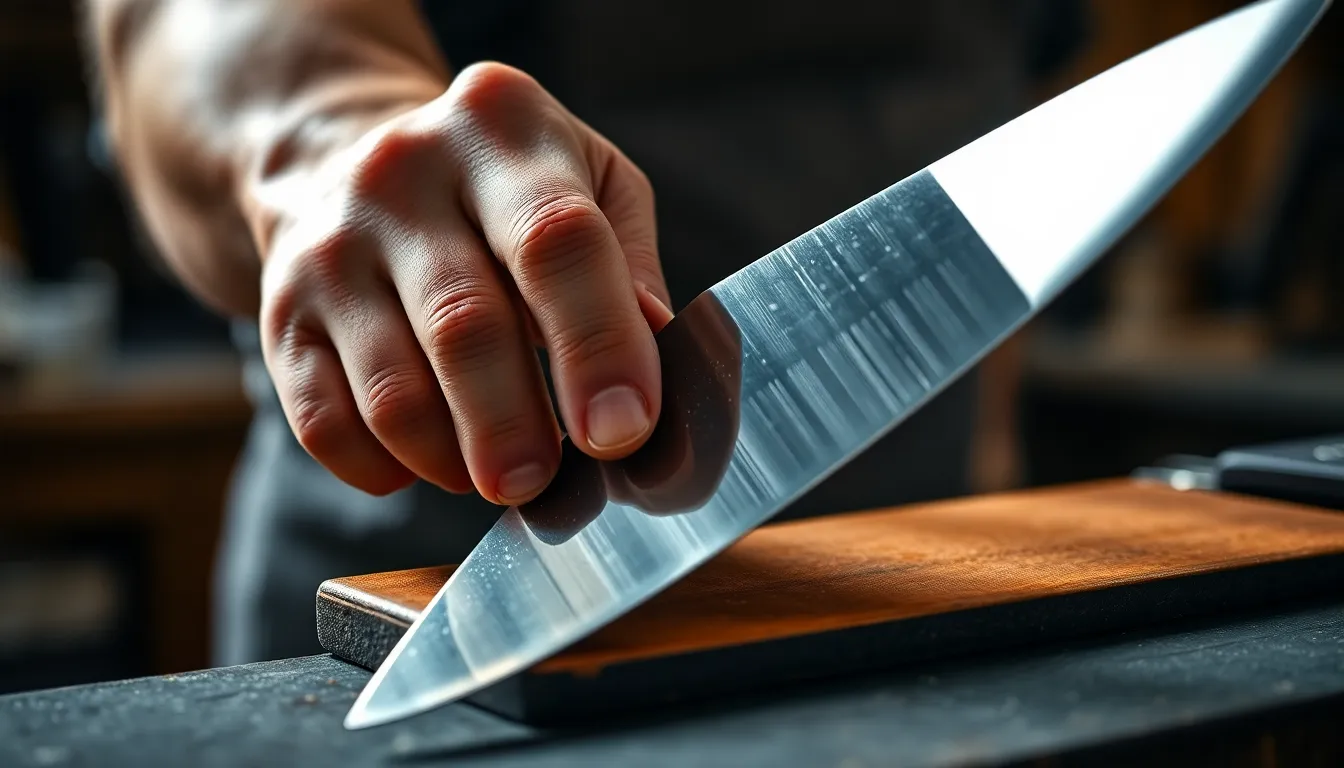
The Core Philosophy Behind Japanese Chef’s Knives
The fundamental philosophy underpinning japanese chef’s knives is deeply rooted in the concept of “Shokunin” – a master artisan who is not only skilled but also possesses a spiritual and social responsibility to their craft. This extends beyond mere technical proficiency to encompass an absolute devotion to making the best possible product. For knife makers, this means an obsession with material science, ergonomic design, and blade geometry, all converging to create a tool that performs flawlessly and endures for generations.
This holistic approach ensures that every aspect of the knife, from the tip of the blade to the end of the handle, contributes to its overall performance and user experience. It’s about creating balance, precision, and an intuitive connection between the chef and their tool. The philosophy guides continuous improvement, as artisans strive for ever greater levels of sharpness and durability, truly embodying the spirit of excellence in every japanese chef’s knife they produce.
Historical Roots and Traditional Craftsmanship
The origins of japanese chef’s knives are inextricably linked to the illustrious history of samurai swords. Centuries ago, the same techniques and metallurgy used to forge katana, renowned for their incredible strength and sharpness, were adapted for culinary tools. This heritage imbued early kitchen knives with a legendary quality and a deep respect for the forging process. The transition from sword-making to knife-making brought with it a legacy of precise heat treatment, complex layering, and meticulous hand-finishing.
Traditional craftsmanship, often passed down through generations within artisan families, forms the bedrock of modern Japanese knife production. Techniques like “honyaki” (single-piece, differentially hardened steel) and “kasumi” (laminated steel) are direct descendants of ancient methods, requiring immense skill and experience. These methods are labor-intensive but yield blades of unparalleled performance and beauty, distinguishing authentic japanese chef’s knives from mass-produced imitations. The very soul of the craftsman is imparted into the steel, making each knife a unique work of art.
Understanding Blade Profiles: Beyond the Basics of Japanese Chef’s Knives
To truly appreciate japanese chef’s knives, one must move beyond general terminology and delve into their specific blade profiles. Each profile is meticulously designed for particular culinary tasks, reflecting centuries of practical experience. For instance, the Gyuto, akin to a Western chef’s knife, offers versatility for slicing, dicing, and chopping. Its gentle curve facilitates rocking cuts, making it a workhorse for diverse kitchen tasks.
The Santoku, meaning “three virtues,” excels at slicing, dicing, and mincing, typically featuring a flatter edge for more precise push cuts. Other specialized profiles include the Yanagiba, a long, slender single-bevel knife perfect for thinly slicing raw fish for sushi and sashimi, and the Deba, a thick, heavy single-bevel knife designed for filleting whole fish and breaking down poultry. Each shape is optimized for efficiency and precision, allowing chefs to perform specialized tasks with unparalleled ease. Understanding these profiles is key to building a versatile set of japanese chef’s knives tailored to individual needs.
The Precision-Focused Design Ethos
The design ethos of japanese chef’s knives is relentlessly focused on precision, a principle that dictates every curve, angle, and material choice. This dedication to exactness is evident in the incredibly thin blade geometries, which minimize resistance when cutting, leading to cleaner slices and less damage to delicate ingredients. The acute edge angles, often between 10-15 degrees per side, are far sharper than typical Western knives, which usually range from 20-25 degrees.
This precision extends to the balance of the knife, ensuring that the tool feels like a natural extension of the user’s hand, reducing fatigue during long periods of use. Even the slightest deviation in blade alignment or handle weight distribution is meticulously corrected by master craftsmen. This commitment to detail ensures that each japanese chef’s knife delivers consistent, effortless performance, transforming complex culinary preparations into precise, enjoyable tasks.
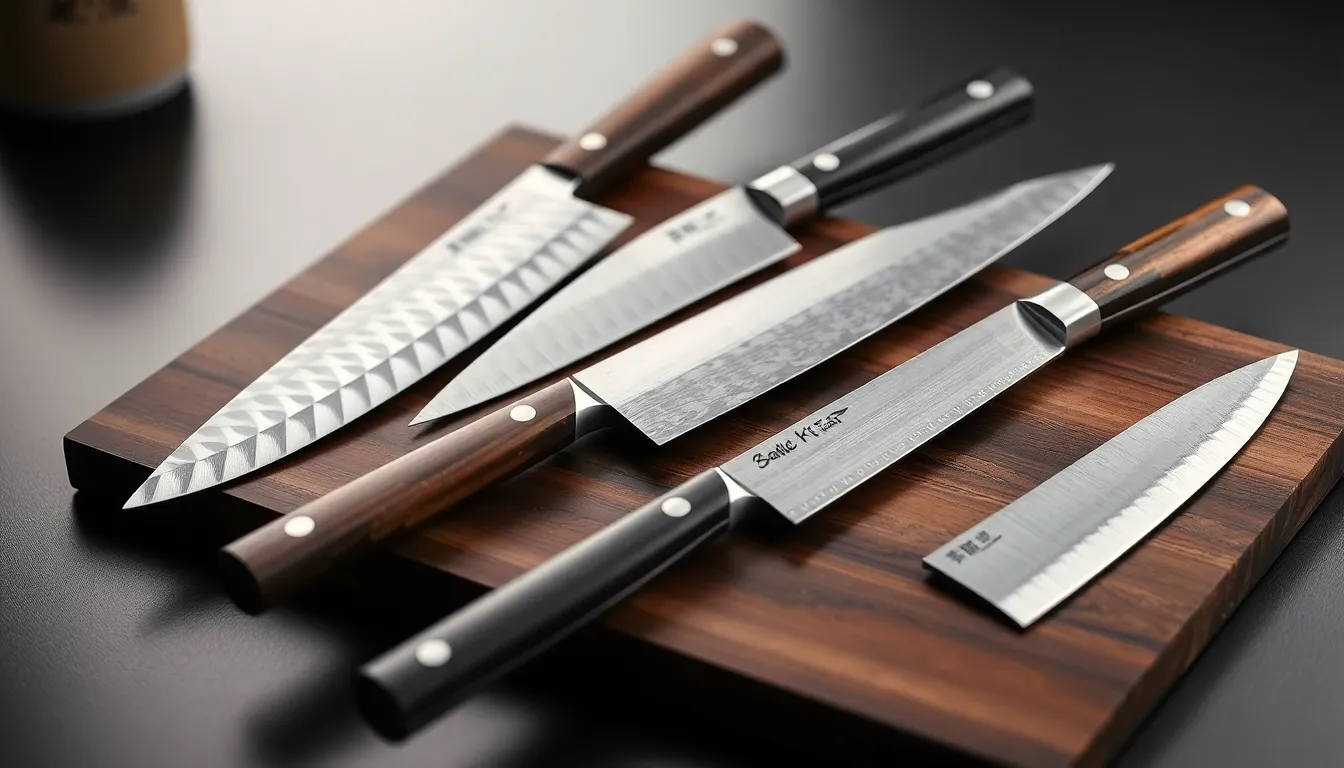
Mastering the Materials: Steel, Construction, and Edge Geometry of Japanese Knives
The exceptional performance of japanese chef’s knives is fundamentally rooted in the masterful selection and treatment of their materials. Steel, in particular, is not merely a component but the very soul of the blade. Japanese artisans employ a diverse range of steels, each chosen for specific characteristics like hardness, edge retention, toughness, and ease of sharpening. Understanding these materials is paramount to appreciating the true craftsmanship and potential of these culinary tools.
Beyond the raw materials, the way these steels are forged and constructed into a blade, and the geometry of the final edge, are equally critical. These intricate processes collectively define a knife’s cutting ability, durability, and overall feel in the hand. The interplay between steel, construction, and edge geometry creates the distinctive performance attributes that make japanese chef’s knives legendary. For a deeper dive into knife materials, visit our section on materials and steel.
Steel Metallurgy Unpacked: Carbon vs. Stainless, and Key Alloys (Aogami, SG2, VG-10)
The choice of steel is perhaps the most defining characteristic of any japanese chef’s knife. Broadly, they fall into two categories: high-carbon steel and stainless steel. High-carbon steels, such as Aogami (Blue Paper Steel) and Shirogami (White Paper Steel), are revered for their exceptional hardness and ability to take an incredibly sharp edge. Aogami, especially, contains tungsten and chromium, enhancing edge retention and making it less brittle than Shirogami, though both require diligent care to prevent rust and patina formation. These steels provide a cutting experience that is often described as superior due to their fine grain structure.
Stainless steels, while generally not reaching the peak hardness of carbon steels, offer significant corrosion resistance, making them easier to maintain. Key stainless alloys for japanese chef’s knives include VG-10, known for its good edge retention and relative ease of sharpening, and SG2 (R2), a powdered metallurgical steel that combines impressive hardness with excellent toughness and stain resistance. SG2 is particularly prized for its ability to hold a razor-sharp edge for extended periods. Each steel type caters to different user preferences and maintenance commitments, ensuring a wide array of choices for professional chefs.
Blade Construction Techniques: Monosteel, San Mai, and Damascus Patterns
The construction of a japanese chef’s knife blade significantly impacts its performance, durability, and aesthetics. Monosteel construction involves a single type of steel hardened throughout the blade. This is common in simpler, more affordable knives, and while effective, it can be more prone to chipping if the steel is very hard and brittle. For premium performance, laminated constructions are more prevalent.
San Mai is a popular construction method where a core layer of hard, high-carbon steel (the cutting edge) is sandwiched between two layers of softer, tougher steel. This provides a balance of extreme sharpness at the edge with increased durability and shock absorption in the blade body, making the overall knife more resilient. The softer outer layers also protect the brittle core from breaking, providing a distinct advantage for japanese chef’s knives in demanding kitchen environments.
Damascus patterns, often seen on higher-end japanese chef’s knives, are created by forging multiple layers of different steels together, then acid-etching the surface to reveal intricate patterns. While visually stunning, true Damascus construction (e.g., in a San Mai configuration) also provides the protective benefits of layered steel. It’s not just for aesthetics; the layering adds toughness to the blade while allowing for a very hard core. Renowned brands like Shun Cutlery are famous for their beautiful and functional Damascus blades.
The Art of the Edge: Single Bevel, Double Bevel, and Asymmetrical Grinds
The edge geometry is arguably the most critical aspect determining a japanese chef’s knife’s cutting performance. Unlike most Western knives which are predominantly double-bevel (V-shaped) with symmetrical grinding, Japanese knives often feature highly specialized edge profiles. Double-bevel edges, common in Gyutos and Santokus, are ground on both sides of the blade, suitable for both right- and left-handed users and offering versatility for a wide range of tasks.
However, the pinnacle of Japanese edge artistry is often found in single-bevel knives. These blades are ground primarily on one side, creating an extremely acute, chisel-like edge that excels at specific tasks like filleting fish or precise vegetable cuts. The flat back of the blade, often slightly concave (called “urasuki”), creates an air pocket that reduces sticking and allows for incredibly thin slices. Examples include Yanagiba, Deba, and Usuba knives, which demand a higher level of skill from the user but deliver unparalleled precision.
Asymmetrical grinds are a nuanced variation, where both sides of a double-bevel blade are ground, but one side at a steeper angle than the other. This creates a slightly off-center edge that offers some of the benefits of a single-bevel knife (such as improved food release) while retaining the versatility of a double-bevel. Mastering the art of sharpening these diverse edge geometries is a skill in itself, crucial for maintaining the legendary sharpness of japanese chef’s knives.
Beyond the Blade: Handles, Balance, and the Ergonomics of Japanese Chef’s Knives
While the blade is undeniably the heart of any knife, the handle and the overall balance of the tool are equally critical for performance, comfort, and safety, especially with japanese chef’s knives. A perfectly crafted blade can be rendered ineffective if the handle is uncomfortable or the balance is off, leading to fatigue and reduced precision during prolonged use. The handle provides the crucial interface between the chef’s hand and the cutting edge, dictating control and leverage.
Japanese knife makers pay meticulous attention to handle design and material, understanding that ergonomics directly impact a chef’s efficiency and enjoyment. The harmony between blade weight, handle shape, and material contributes to a knife that feels like an extension of the hand, rather than just a tool. This holistic design philosophy ensures that every aspect of japanese chef’s knives is optimized for culinary excellence.
Wa Handle vs. Western Handle: Form, Function, and Feel
The choice between a traditional Japanese “Wa” handle and a Western-style handle is a significant consideration when selecting japanese chef’s knives. Wa handles, typically made of wood, are lighter and often have a simpler, more cylindrical or octagonal shape. They are designed for a pinch grip, promoting precise control and agility, particularly beneficial for delicate tasks. Their lighter weight also shifts the balance point forward, enhancing the feeling of a “blade-heavy” knife, which many chefs prefer for detailed work.
Western handles, conversely, are usually made from composite materials or stabilized wood and are contoured to fit the hand more ergonomically, often with a full tang for perceived durability and balance. They tend to be heavier, pushing the knife’s balance point further back towards the handle. While offering a robust grip, they might not provide the same level of fine control as a lighter Wa handle for intricate cuts. The choice ultimately depends on personal preference, grip style, and the type of work one anticipates performing with their japanese chef’s knives.
The Impact of Handle Materials on Performance and Durability
The material of a knife handle greatly influences its feel, durability, and maintenance requirements. Traditional Wa handles for japanese chef’s knives often feature natural woods like Magnolia, Rosewood, or Ho wood, sometimes combined with a bolster of Buffalo horn or Pakkawood. These materials offer a warm, natural grip that can develop a unique patina over time. However, natural woods require careful drying after washing to prevent cracking or warping and are less resistant to moisture than synthetic alternatives.
Modern japanese chef’s knives also utilize advanced synthetic materials for handles, such as Micarta, G-10, and carbon fiber. These materials are highly durable, impervious to moisture, and offer excellent grip even when wet. They are also incredibly stable and resistant to warping or cracking, making them ideal for high-volume professional kitchens. While they may lack the traditional aesthetic of natural wood, their low maintenance and superior longevity make them a practical choice for many. The choice of handle material impacts not just the aesthetics but also the long-term usability and care routine for the knife.
Achieving Perfect Balance: Weight Distribution and Control in Japanese Chef’s Knives
The concept of balance in japanese chef’s knives is paramount, directly influencing control, maneuverability, and user fatigue. Unlike some Western knives that aim for a balance point near the bolster, many Japanese knives are designed to be slightly blade-heavy. This forward bias in weight distribution aids in precise cutting by leveraging gravity to assist with each stroke, reducing the amount of force the chef needs to exert. This translates to less strain on the wrist and arm during extended periods of cutting.
Achieving this perfect balance involves careful consideration of the blade’s thickness, length, and grind, in conjunction with the weight and material of the handle. Master artisans meticulously adjust these factors, often by eye and feel, until the knife feels like an intuitive extension of the user’s hand. This exquisite balance allows for unparalleled control, enabling delicate tasks like julienning vegetables or filleting fish with remarkable precision. It’s this thoughtful engineering that elevates japanese chef’s knives from mere tools to true works of art, enhancing the culinary experience.
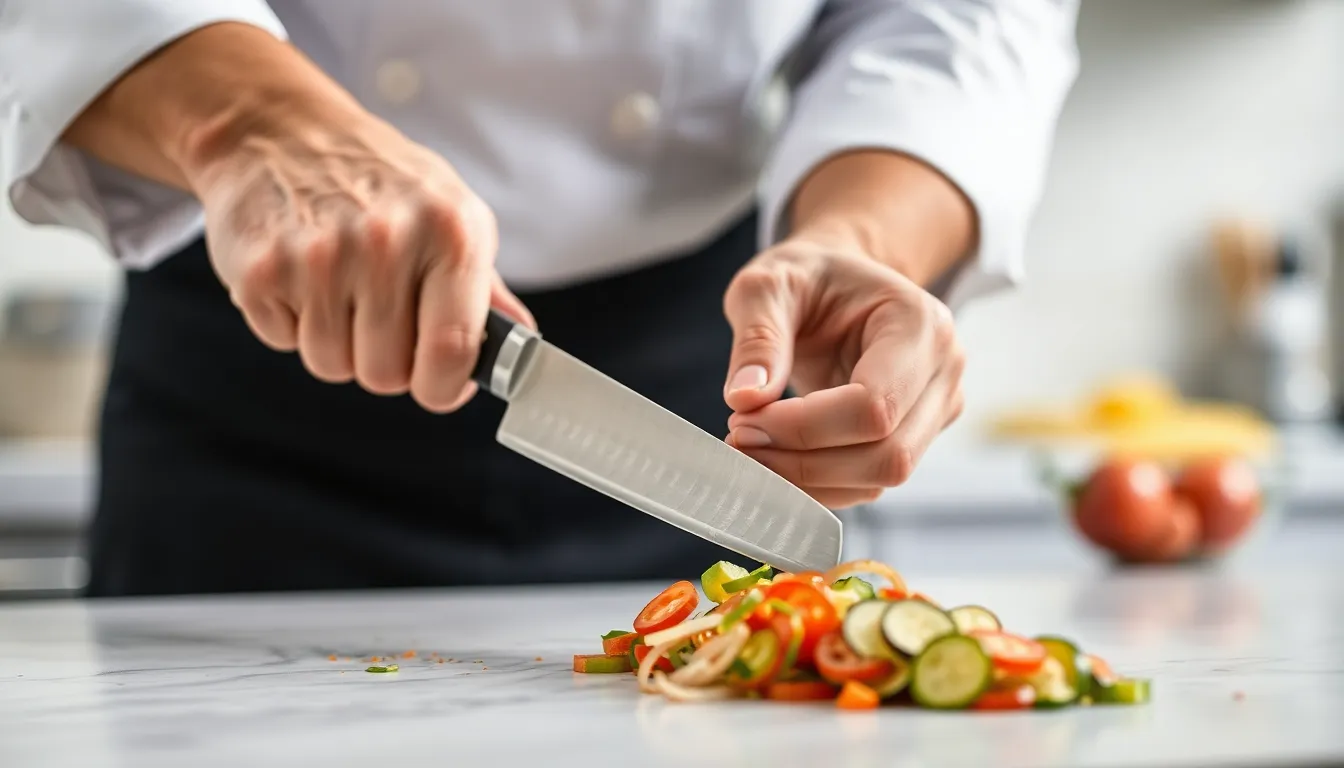
Preserving Perfection: Advanced Care for Your Japanese Chef’s Knives
Owning japanese chef’s knives is an investment in precision and performance, an investment that demands diligent and informed care. These blades, with their often harder steels and thinner geometries, require a more nuanced approach to maintenance than typical Western cutlery. Proper care is not just about keeping the knife clean; it’s about preserving its exceptional sharpness, preventing corrosion, and extending its lifespan for decades of use. Neglect can quickly diminish their performance and compromise their integrity. Therefore, understanding advanced care techniques is essential for any professional or enthusiast.
From mastering the art of whetstone sharpening to understanding the nuances of patina and rust prevention, the commitment to care ensures that these exquisite tools continue to perform at their peak. This section will delve into the professional approaches required to maintain the unparalleled edge and pristine condition of your cherished japanese chef’s knives. For comprehensive care guides, see our sharpening and care section.
Whetstone Mastery: Progressive Sharpening Techniques for Diverse Steels
True sharpness for japanese chef’s knives is achieved not through pull-through sharpeners but through the methodical art of whetstone sharpening. This technique requires patience and practice but yields an unparalleled edge. Progressive sharpening involves using a series of whetstones with increasingly finer grits. You typically start with a coarse stone (e.g., 400-800 grit) to establish a new bevel or repair minor edge damage, ensuring consistency throughout the blade. This initial stage removes material efficiently and quickly reforms the blade’s geometry.
Next, you move to a medium-grit stone (e.g., 1000-2000 grit) to refine the edge and remove scratches left by the coarser stone. This step is crucial for developing the initial keenness. Finally, a fine-grit stone (e.g., 4000-8000 grit or higher) is used for polishing and honing the edge, creating a mirror finish that maximizes sharpness and cutting performance. For single-bevel japanese chef’s knives, the process also involves specific techniques for flattening the ura (back side) and raising a burr on the omote (front side) to achieve their unique chisel-like sharpness. Understanding how different steels react to these grits is key to preventing over-grinding or under-sharpening, maintaining the integrity of these precision instruments.
Patina, Rust, and Prevention: Professional Approaches to Maintenance
High-carbon japanese chef’s knives are renowned for their incredible sharpness but are susceptible to rust and develop a unique patina over time. Patina, a bluish-grey or brownish layer, forms on the blade’s surface as a result of oxidation from acids in food. It’s not rust; rather, it’s a protective layer that helps prevent red rust and adds character to the knife. Encouraging an even, stable patina is often desired by enthusiasts, as it enhances the blade’s natural beauty. You can achieve this by cutting acidic foods like onions or lemons, then immediately cleaning and drying the blade.
Rust, however, is corrosive and damaging. To prevent it, always wash your japanese chef’s knives immediately after use with warm, soapy water and dry them thoroughly with a clean towel. Never leave them to air dry or soak in water. For carbon steel, applying a thin coat of food-grade mineral oil before storage is highly recommended, especially in humid environments. Even stainless japanese chef’s knives, while more resistant, can still rust if left wet or exposed to harsh chemicals. Regular inspection and immediate action on any visible rust spots using a rust eraser or fine abrasive paste are vital for long-term preservation.
Minor Edge Repair and Long-Term Blade Preservation
Even with meticulous care, the acute edges of japanese chef’s knives can occasionally suffer minor damage like small chips or rolls. Understanding how to perform minor edge repair is crucial for maintaining their optimal performance without needing professional intervention every time. A fine-grit diamond sharpening plate or a very coarse whetstone (e.g., 200-400 grit) can be used carefully to grind out small chips by working the area around the chip until the edge is reformed. For a rolled edge, a finer sharpening stone can often realign the steel, restoring its sharpness. Patience and a light hand are essential to avoid removing too much material or deforming the blade profile.
Long-term preservation for japanese chef’s knives involves more than just regular sharpening and cleaning. Proper storage is paramount: magnetic knife strips, wooden blocks, or individual saya (wooden blade covers) prevent blades from knocking against each other, which can cause chips or dulling. Avoiding dishwashers is non-negotiable, as the harsh detergents and high heat can severely damage the steel and handle. Periodically inspecting the handle for looseness or cracks and addressing them promptly will extend the knife’s life. By embracing these professional preservation techniques, your japanese chef’s knives will remain razor-sharp and beautiful for a lifetime of culinary creations. Their inherent quality means they are designed to last, but only with your commitment to their upkeep.
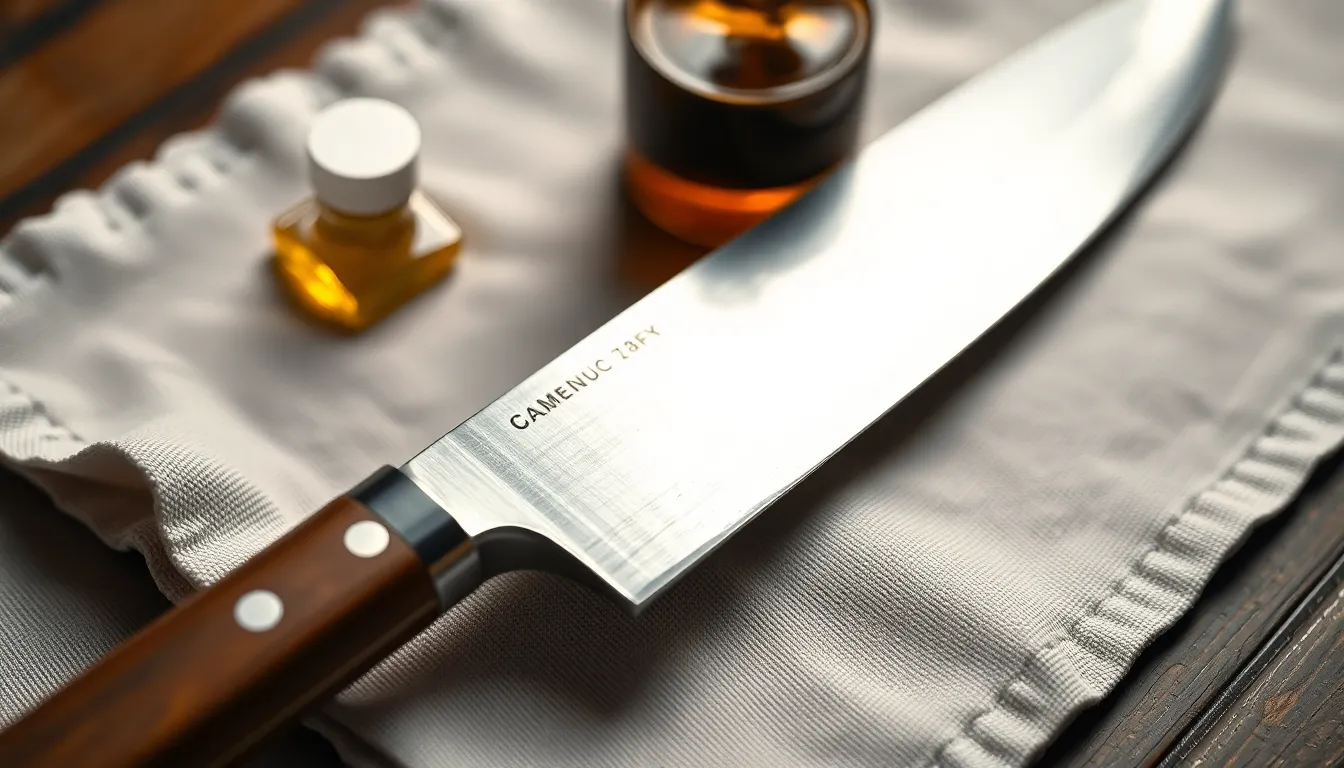
Building a Professional’s Portfolio: Selecting Your Ideal Japanese Chef’s Knives
Curating a collection of japanese chef’s knives is a journey unique to each culinary professional, reflecting their individual cooking style, preferred ingredients, and ergonomic considerations. It’s more than just accumulating blades; it’s about building a portfolio of tools that enhance efficiency, precision, and enjoyment in the kitchen. This process involves navigating a vast landscape of styles, steels, and artisanal traditions, making informed decisions about each acquisition. The goal is to select knives that not only perform exceptionally but also resonate with the user’s specific needs and aspirations.
This section will guide you through the nuanced process of selecting your ideal japanese chef’s knives, from debunking common misconceptions to understanding specialized use cases and evaluating the true value of renowned brands versus emerging artisans. It’s about empowering you to make choices that will truly elevate your culinary craft. Explore our comprehensive buying guides for more assistance.
Debunking Common Myths About Japanese Chef’s Knives
The mystique surrounding japanese chef’s knives has given rise to several common misconceptions that can hinder informed purchasing decisions. One prevalent myth is that all Japanese knives are extremely delicate and prone to chipping. While many high-carbon, very hard Japanese blades can be more brittle than softer Western counterparts, modern metallurgy and laminated construction (San Mai) have produced incredibly robust and forgiving japanese chef’s knives suitable for professional use. Proper technique and care are key, not inherent fragility.
Another myth is that all single-bevel Japanese knives are strictly for right-handed users. While traditionally ground for right-handers, many left-handed versions are available, and some ambidextrous designs exist. Furthermore, the belief that thicker, heavier knives are always superior for tough tasks is also a misconception. The thin, precise geometry of many japanese chef’s knives often allows them to cut through dense ingredients with less resistance, relying on sharpness rather than brute force. Debunking these myths is crucial for new users to approach these magnificent tools with realistic expectations and confidence.
A third common misconception is that stainless steel japanese chef’s knives are inherently inferior to carbon steel. While carbon steels are lauded for their ultimate sharpness, premium stainless alloys like SG2 and VG-10 offer superb edge retention, excellent toughness, and significantly reduced maintenance. The choice between carbon and stainless often comes down to personal preference for patina, maintenance commitment, and specific cutting feel, rather than a definitive superiority of one over the other.
Finally, the idea that a high price tag automatically guarantees the “best” japanese chef’s knife is not always true. While quality craftsmanship commands a fair price, some emerging artisans or less famous regional makers produce exceptional knives at more accessible price points. Conversely, some heavily marketed brands may have inflated prices. Researching the specific steels, construction methods, and maker’s reputation is far more important than solely relying on cost. A thorough understanding helps in building a collection of truly valuable japanese chef’s knives.
Matching the Blade to the Task: Specialized Use Cases for Different Styles
A professional’s portfolio of japanese chef’s knives is not a collection of general-purpose tools, but rather a curated selection of specialized instruments, each perfectly matched to specific culinary tasks. The Gyuto, with its versatile Western-style curve, is excellent for general slicing, dicing, and mincing, making it a reliable workhorse for a wide array of ingredients. For vegetables, the Santoku offers superior push-cutting capabilities with its flatter profile, while an Usuba (a single-bevel vegetable knife) allows for incredibly thin, precise cuts like katsuramuki (rotary peeling) and detailed garnishes.
For breaking down fish, a Deba is indispensable for its robust spine and chisel-like edge, making quick work of bones and scales while preserving delicate fillets. When preparing sushi and sashimi, the long, thin, single-bevel Yanagiba or Takohiki (a variant with a blunt tip) ensures clean, precise slices without tearing the delicate fish flesh. Understanding these specialized use cases allows chefs to select the right japanese chef’s knives for their specific cuisine and cooking style, maximizing efficiency and achieving superior results. The diversity of Japanese blade profiles means there’s a perfect knife for virtually every culinary application, from delicate precision to heavy-duty butchery, making these knives an essential part of a professional kitchen.
Investment vs. Utility: Evaluating Renowned Artisans and Emerging Brands
When selecting japanese chef’s knives, chefs often face a choice between investing in knives from renowned, multi-generational artisan families or exploring high-quality blades from emerging brands and smaller workshops. Renowned artisans, like those from Sakai or Echizen, often command higher prices due to their established reputation, consistent quality, and the mastery passed down through centuries. These knives are often considered heirloom pieces, not just tools, providing both exceptional utility and a sense of history. Brands like Global Knives have established a global presence with their innovative design and high-quality stainless steel, offering a different kind of investment.
However, many emerging brands and lesser-known, smaller workshops are producing incredibly high-performance japanese chef’s knives at more accessible price points. These makers often leverage modern steels and techniques while retaining traditional craftsmanship, offering excellent utility without the premium associated with centuries of heritage. Evaluating these options requires research into the specific smith, the steels they use, their heat treatment processes, and customer reviews rather than just brand recognition. Ultimately, the best investment is a knife that fits your budget, meets your specific utility needs, and feels right in your hand, whether it comes from a celebrated master or a promising newcomer in the world of japanese chef’s knives.
The Enduring Craft of Japanese Chef’s Knives
The journey through the world of japanese chef’s knives reveals not just a collection of superior cutting tools, but a profound cultural legacy deeply intertwined with art, precision, and an unwavering commitment to quality. These knives stand as a testament to centuries of relentless refinement, where every facet, from the choice of steel to the angle of the edge, is meticulously considered and executed. They are more than just implements; they are extensions of the chef’s skill, designed to elevate the culinary experience through unparalleled sharpness and balance. Their enduring appeal lies in their ability to bridge ancient traditions with modern demands, continuously adapting while honoring their historical roots.
The dedication of Japanese artisans ensures that the craft of knife making remains vibrant and relevant in an ever-evolving culinary landscape. From the smallest home kitchen to the most prestigious Michelin-starred restaurant, japanese chef’s knives continue to set the standard for what a cutting tool can and should be. Their legacy is one of precision, beauty, and functional perfection, inspiring chefs around the globe to pursue culinary excellence with the best tools at their disposal.
The Legacy Continues: Innovation and Tradition in Modern Japanese Knife Making
The legacy of japanese chef’s knives is far from static; it is a dynamic interplay between deeply rooted tradition and continuous innovation. While master smiths meticulously preserve ancient forging and sharpening techniques, modern metallurgists and designers are pushing the boundaries of material science and ergonomics. New powdered steels like SG2 (R2) and ZDP-189 offer unprecedented hardness and edge retention, while advanced heat treatments enhance toughness and performance. This fusion of old and new ensures that japanese chef’s knives remain at the forefront of culinary technology.
Innovations in handle materials, blade geometries, and even sharpening compounds continue to emerge, all designed to make these knives even more effective and user-friendly. Yet, these advancements are always grounded in the core principles of Japanese craftsmanship: precision, balance, and respect for the material. The enduring appeal of japanese chef’s knives lies in this delicate balance, where tradition provides the soul and innovation offers new avenues for perfection, ensuring their relevance for generations to come.
Embracing the Journey: A Commitment to Craft and Care
Embracing the world of japanese chef’s knives is more than just making a purchase; it’s a commitment to a journey of learning, practice, and appreciation. It involves understanding the nuances of different steels, mastering the art of whetstone sharpening, and committing to diligent care and maintenance. This journey transforms the act of cooking into a more mindful and enjoyable experience, as chefs develop a deeper connection with their tools and the food they prepare.
The pursuit of culinary excellence often begins with the right tools, and few tools embody this principle as profoundly as japanese chef’s knives. By investing in these exceptional instruments and dedicating oneself to their proper care, chefs not only elevate their craft but also participate in a centuries-old tradition of precision and artistry. It’s a rewarding path that celebrates both the enduring legacy of the artisan and the joy of creating exquisite food.
Explore more exceptional Japanese knives and culinary insights on our blog:
